Carnival of Nuclear Energy 151
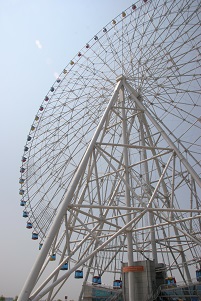 The 151st Carnival of Nuclear Energy is at Next Big Future. Click here to access the latest edition of the Carnival.
The 151st Carnival of Nuclear Energy is at Next Big Future. Click here to access the latest edition of the Carnival.
The ANS Nuclear Cafe is a blog owned and edited by the American Nuclear Society. Information contained on the ANS Nuclear Cafe has been provided by numerous sources. Therefore, the American Nuclear Society assumes no responsibility or liability for the accuracy of information contained herein. DISCLAIMER: The views expressed in posted articles do not necessarily reflect the views of the American Nuclear Society. The views expressed here are those of the individual authors. ANS takes no ownership of their views. The American Nuclear Society assumes no responsibility or liability for any use or operation of any methods, products, instructions, or ideas contained on this site.

A message from Goodway Technologies
Optimizing Maintenance Strategies in Power Generation: Embracing Predictive and Preventive Approaches
 The 151st Carnival of Nuclear Energy is at Next Big Future. Click here to access the latest edition of the Carnival.
The 151st Carnival of Nuclear Energy is at Next Big Future. Click here to access the latest edition of the Carnival.
Charles Chase and his team at Lockheed Martin's "Skunk Works" made quite a splash recently by announcing that they are attempting to develop a truck-trailer-sized 100-MW fusion reactor-to be ready for operation in just a few years!
 It's high time to make plans to attend the American Nuclear Society's 2013 Annual Meeting, held this year in Atlanta, Georgia, on June 16-20 at the Hyatt Regency Atlanta.
It's high time to make plans to attend the American Nuclear Society's 2013 Annual Meeting, held this year in Atlanta, Georgia, on June 16-20 at the Hyatt Regency Atlanta.
 The March/April 2013 edition of the technical journal Fusion Science and Technology (FST) is available electronically and in hard copy for American Nuclear Society member subscribers and others.
The March/April 2013 edition of the technical journal Fusion Science and Technology (FST) is available electronically and in hard copy for American Nuclear Society member subscribers and others.
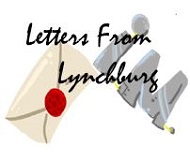 On Sunday, March 31, 2013, just a few months before his 91st birthday, Ted Rockwell passed away quietly in his sleep. His passing has stimulated a profound sense of loss among nuclear energy professionals.
On Sunday, March 31, 2013, just a few months before his 91st birthday, Ted Rockwell passed away quietly in his sleep. His passing has stimulated a profound sense of loss among nuclear energy professionals.
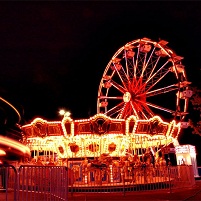 The 150th Carnival of Nuclear Energy appeared over the weekend at Atomic Power Review. Click here to access the latest edition of the Carnival.
The 150th Carnival of Nuclear Energy appeared over the weekend at Atomic Power Review. Click here to access the latest edition of the Carnival.
While Shippingport Atomic Power Station in Pennsylvania was the first full-scale nuclear plant to be designed and built to provide commercial electric power, the Vallecitos Atomic Electric Power Plant in California was actually the first privately-financed nuclear power plant to provide meaningful amounts of electricity for public use.
Following the Three Mile Island (TMI) accident on March 28, 1979, it seemed to many as if a slowing nuclear energy industry in the United States had been dealt a death blow. It had not, but the public's confidence was shaken, and this blow to public opinion built upon a decade's worth of intensive, focused anti-nuclear effort on the part of a number of large well-funded special interest groups.
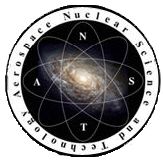 In this first of a series of articles on nuclear propulsion for space travel, allow me to enlighten each of you about the fascinating history of this technology. This post will cover three early projects, with posts to follow that will explore other technologies along with an assessment of future prospects.
In this first of a series of articles on nuclear propulsion for space travel, allow me to enlighten each of you about the fascinating history of this technology. This post will cover three early projects, with posts to follow that will explore other technologies along with an assessment of future prospects.
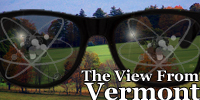 I have been thinking lately about "framing the discourse" on nuclear energy. Framing is the way that people use words and concepts to present their points of view in an understandable and appealing way to other people. I think that pro-nuclear people are often bad at this. We figure that "the truth will set you free," and then we don't spend very much time on how to frame the truth.
I have been thinking lately about "framing the discourse" on nuclear energy. Framing is the way that people use words and concepts to present their points of view in an understandable and appealing way to other people. I think that pro-nuclear people are often bad at this. We figure that "the truth will set you free," and then we don't spend very much time on how to frame the truth.
 The American Nuclear Society's ANS Nuclear Cafe is proud to host the 149th edition of the Carnival of Nuclear Energy. Each week, the top English-language nuclear bloggers and authors contribute their best posts to the Carnival, which appears at one of a rotating number of sites. Reading the Carnival each week is the best way to keep on top of the issues that experts in the nuclear blogosphere believe are most important, and keep up on all types of events and news. With that, let's get right to it!
The American Nuclear Society's ANS Nuclear Cafe is proud to host the 149th edition of the Carnival of Nuclear Energy. Each week, the top English-language nuclear bloggers and authors contribute their best posts to the Carnival, which appears at one of a rotating number of sites. Reading the Carnival each week is the best way to keep on top of the issues that experts in the nuclear blogosphere believe are most important, and keep up on all types of events and news. With that, let's get right to it!
"The best science online" according to someone who really ought to know: Henry Reich, creator of MinutePhysics.
 The US Department of Energy has a $452 million program to share development and licensing costs for selected small modular reactor (SMR) designs. The DOE's goal is to have an operating SMR by ~2022. Last November, the DOE awarded the first grant to the B&W mPowerTM reactor. In more recent news, the DOE has decided to issue a follow-on solicitation to enter a similar cost-sharing agreement with one or more other SMR vendors (and their SMR designs). The status of development and licensing for several SMR designs are summarized below.
The US Department of Energy has a $452 million program to share development and licensing costs for selected small modular reactor (SMR) designs. The DOE's goal is to have an operating SMR by ~2022. Last November, the DOE awarded the first grant to the B&W mPowerTM reactor. In more recent news, the DOE has decided to issue a follow-on solicitation to enter a similar cost-sharing agreement with one or more other SMR vendors (and their SMR designs). The status of development and licensing for several SMR designs are summarized below.
 Recently I had the honor of joining the "Rising Stars in Nuclear Science and Engineering Symposium" at the Massachusetts Institute of Technology. It was a unique symposium, inviting a dozen Ph.D. candidates and early postdoctoral fellows to showcase their research, and to engage in rich discussions of early career strategies and challenges with exceptional researchers in the field.
Recently I had the honor of joining the "Rising Stars in Nuclear Science and Engineering Symposium" at the Massachusetts Institute of Technology. It was a unique symposium, inviting a dozen Ph.D. candidates and early postdoctoral fellows to showcase their research, and to engage in rich discussions of early career strategies and challenges with exceptional researchers in the field.
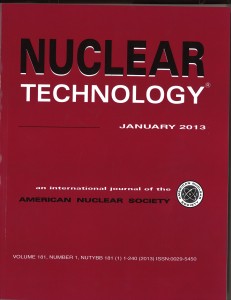 The American Nuclear Society is soliciting names of qualified members who are interested in becoming the editor of the ANS journal Nuclear Technology (NT). Dr. Nicholas Tsoulfanidis, Professor Emeritus of Nuclear Engineering, Missouri University of Science and Technology, has served as editor of NT since June 1997. During his term, Professor Tsoulfanidis has done an outstanding job. He has raised NT's reputation for technical excellence and has kept up a full schedule of publishing monthly issues.
The American Nuclear Society is soliciting names of qualified members who are interested in becoming the editor of the ANS journal Nuclear Technology (NT). Dr. Nicholas Tsoulfanidis, Professor Emeritus of Nuclear Engineering, Missouri University of Science and Technology, has served as editor of NT since June 1997. During his term, Professor Tsoulfanidis has done an outstanding job. He has raised NT's reputation for technical excellence and has kept up a full schedule of publishing monthly issues.
 The 148th edition of the Carnival of Nuclear Bloggers is up now at Hiroshima Syndrome. Click here to access the site; the Carnival is at the top of the page.
The 148th edition of the Carnival of Nuclear Bloggers is up now at Hiroshima Syndrome. Click here to access the site; the Carnival is at the top of the page.
The debate over the continuing investigations into steam generator U-tube problems at San Onofre Nuclear Generating Station (SONGS) last week entered a new phase of heightened publicity and public scrutiny as the Nuclear Regulatory Commission (NRC) released Mitsubishi documents which detailed that company's investigations into the root causes of the problems.
Mmmm....Pie.
 Many people are puzzled by the anti-nuclear movement in Vermont and the world. Those who consider all the evidence often don't understand the opposition. Many issues and accusations are raised against nuclear power by anti-nuclear activists. Trying to understand the root sources of these issues can help in understanding the passion involved.
Many people are puzzled by the anti-nuclear movement in Vermont and the world. Those who consider all the evidence often don't understand the opposition. Many issues and accusations are raised against nuclear power by anti-nuclear activists. Trying to understand the root sources of these issues can help in understanding the passion involved.
On March 11, 2011, a 9.0 earthquake and 40-foot-high tsunami waves hit Fukushima, Japan. The impact on the Fukushima Daiichi nuclear power plant was a call-to-action for members of the American Nuclear Society.